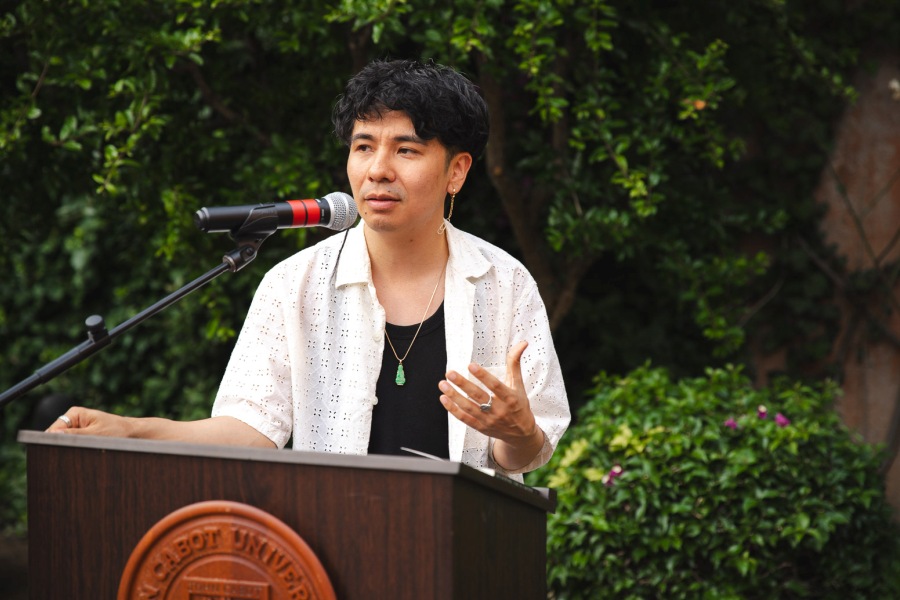JCU's Asian Culture Club Welcomes Gualtiero Cannarsi for a Talk on Japanese Animation
John Cabot University’s Asian Culture Club welcomed voice director Gualtiero Cannarsi for a talk on “The Origins of Japanese Animation’s Originality,” on March 26, 2021. Cannarsi, who is best known for his Italian adaptations of Japanese animation features such as Studio Ghibli movies, has worked in the industry for over 20 years. His presentation focused on the history of Japanese animation and some of its influential directors.
In Japan, the term “anime,” which derives from the English word “animation,” describes all animated works, regardless of style or origin. Outside of Japan and in English, anime is colloquial for Japanese animation and refers specifically to animation produced in Japan.
Cannarsi explained that after World War II, many anime studios started developing in Japan. In previous years, animation in Japan was used mainly for propaganda purposes, and not as entertainment, but in 1948, a company called Toei Animation emerged, with the ambition to become “the Disney of the East.” In the following years, the company looked at traditional Chinese tales for inspiration for its animated movies. Toei’s first animated feature, Hakujaden (1958), or “The Legend of the White Serpent,” was adapted from a Chinese tale by the same title, and it was the first color anime feature film. Despite the film’s very Japanese feel, Disney’s influence can be seen by the presence of songs and “cute animals speaking,” said Cannarsi.
According to Cannarsi, renowned Japanese filmmaker and co-founder of Studio Ghibli Hayao Miyazaki started getting interested in animated movies after watching Hakujaden and being moved by it. After completing his university studies, Miyazaki joined Toei Animation and was mentored by Yasuo Ōtsuka. While there, Miyazaki also met Isao Takahata, who from that moment on would become his collaborator.
Takahata graduated from university with a degree in French Literature, and his work was particularly influenced by it. His interest in animation developed after he watched the French animated film Le Roi et l’Oiseau by Paul Grimault and poet Jacques Prévert, released unfinished in 1952. Unlike Miyazaki, who was mostly interested in the emotional workings of animation, Takahata was interested in its intellectual appeal. In 1968, Takahata released his directorial feature film debut Taiyō no ōji Horusu no dai Bōken, or “The Little Norse Prince,” which was also Miyazaki’s first major film. In 1974, Takahata directed his first anime series, Arupusu no Shōjo Haiji, or “Heidi, Girl of the Alps,” which featured contributions by numerous other anime filmmakers, including Miyazaki. Heidi, Girl of the Alps became very popular worldwide and was dubbed into about twenty languages.
Another key figure in Japanese animation was Osamu Tezuka, who was considered “the god of manga,” or Japanese comics. In the 1960s, Tezuka came up with a cheap and easy way to create animated series, which contributed to popularizing the aesthetic look of anime. Some of his tricks included moving the camera instead of the drawings, repetitions, or low frame rates. This approach reduced production costs but also affected the quality of the animation. However, kids ended up loving the results, such as mouths moving with occasional eye blinks, long shots of detailed backgrounds, and motion-blur-filled action alongside reused drawings. The quality of Japanese animation started increasing in the 1970s, but some of the techniques popularized by Tezuka became standard practices in the anime industry, along with the aesthetic look that they produced.






